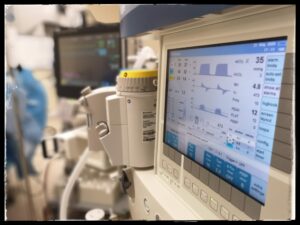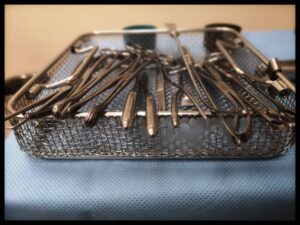 Suction & evacuation is a technique of emptying the uterus of a pregnancy. It can be used to terminate a pregnancy or to remove a fetus that has died. It involves the removal of a fetus and accompanying tissue of the pregnancy from the uterus with instrumental evacuation through the vagina and is usually performed in the first trimester of pregnancy.
Suction & evacuation is a technique of emptying the uterus of a pregnancy. It can be used to terminate a pregnancy or to remove a fetus that has died. It involves the removal of a fetus and accompanying tissue of the pregnancy from the uterus with instrumental evacuation through the vagina and is usually performed in the first trimester of pregnancy.
Reasons for procedure
- Incomplete miscarriage (incomplete expulsion, with presence of pregnancy tissue in the uterine cavity)
- A fetus is no longer alive
- Continuing with the pregnancy may pose a threat to the life of the mother
- Fetus is affected with a major disorder that is incompatible with life
- Fear that the fetus has been harmed by medications or other conditions.
Before the procedure
- Consent for the procedure should be signed
- Food or drinks will not be allowed for at least 6 hours before surgery. For example, if the procedure is in the morning, you should skip breakfast. If it is in the afternoon, you can have an early light breakfast (e.g. tea/coffee/milo and toast) but make sure that this is taken at least 6 hours before the procedure. Please reconfirm this with your doctor
- Pre-medication with oral or vaginal tablets may be given to soften and dilate the cervix prior to the procedure. You may be required to do it yourself or administered by the hospital staff when you arrive on the same day of the procedure
Description of the procedure
- It is done as a daycare procedure
- Most often, a general anaesthesia is given. A local anesthetic with some sedation can be considered. This decision should be made in consultation with your doctor
- The opening of the cervix may need to be enlarged with the use of instruments
- A small, hollow plastic tube (a cannula) is passed through the vagina and cervix into the uterus. The tube is connected to a suction apparatus
- Gentle suction through the tube removes the uterine contents. The tube is then removed.
Sometimes, the lining of the uterus is scraped gently with a curette to be sure all the pregnancy tissue is removed - The whole procedure usually takes about 10 – 15 minutes.
Possible complications
- Excessive bleeding
- Perforation of the uterus
- Infection
- Uterine cavity adhesions
- Retained pregnancy tissue, whereby a repeat procedure may be required.
Post-procedure care
- You may feel cramps in the lower abdomen, nausea and faintness for the first 24 to 48 hours
- Pain relief medication is usually given for 2 to 3 days
- Antibiotic to fight or prevent infection is not routinely given, unless the doctor suspects on-going infection
- You will be allowed food and drinks once you have recovered from the anaesthetic effect. Eat a light meal for the rest of the day. You can resume your normal diet the following day
- Have someone drive you home from surgery
- Use sanitary pads for bleeding, which may last for several days. Do not use tampons or douche
- There is no specific dietary restriction

- Resume normal activities slowly the next day, if you feel able
- Light or moderate vaginal bleeding will occur on and off for 10 to 14 days after surgery
- Allow about 1 week for full recovery from the procedure
- Avoid sexual relations, and do not douche or use tampons for 2 weeks after surgery
- Contraception can often be initiated shortly after the procedure. If you wish to take birth-control pills, begin taking them either on the night you return from surgery or the next day. You may also start during your next period. If you prefer an intra-uterine device, the fitting can often be made during your next doctor’s appointment
- Your next menstrual period should begin 4 to 6 weeks after the procedure. If you take birth control pills, your first period will begin after you complete the first cycle of pills
- If you are keen to conceive again, you should wait until you have had at least 2 to 3 menstrual cycles. Meanwhile, you should continue the folic acid supplementation.
See your doctor immediately if there is:
- You develop signs of infection including headache, muscle aches, dizziness or a general ill and fever
- Increasing nausea, vomiting, constipation, abdominal pain or swelling
- Bleeding (other than vaginal) or unexplained bruising
- Prolonged (more than 2 weeks) or very heavy vaginal bleeding (presence of clots or need to change pads frequently) following a miscarriage
- Persistent and abnormal vaginal discharge
To download and print a pdf copy, CLICK HERE
Please subscribe HERE to receive the regular newsletter and get the latest updates regarding Women’s Health





